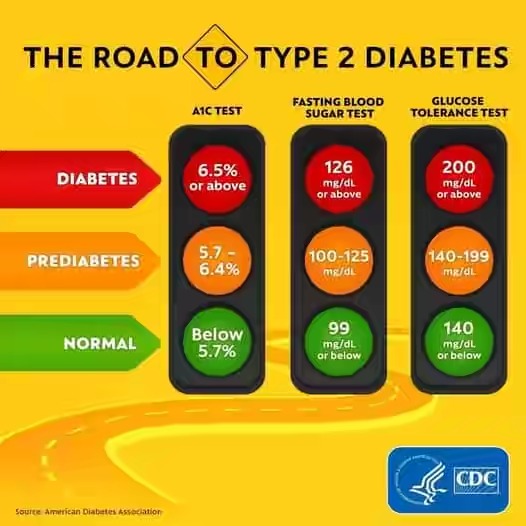Normal blood sugar levels in Kenya
Diabetes affect a large number of people in Kenya probably as a result of their changing lifestyle and diet. It is important for every Kenyan to know their normal blood sugar level so as to know when it is too high (diabetes or hyperglycemia) or too low (hypoglycemia).
Below are some basic glucose tests used to assess blood sugar level that all Kenyans should know.
Tests for Diabetes 😍😍
♦️A1C Test
HBA1C measures your average blood sugar level over the past 2 or 3 months. An A1C below 5.7% is normal, between 5.7 and 6.4% indicates you have prediabetes, and 6.5% or higher indicates you have diabetes.
♦️FASTING BLOOD SUGAR TEST
This measures your blood sugar after an overnight fast (not eating). A fasting blood sugar level of 99 mg/dL or lower is normal, 100 to 125 mg/dL indicates you have prediabetes, and 126 mg/dL or higher indicates you have diabetes.
♦️GLUCOSE TOLERANCE TEST
This measures your blood sugar before and after you drink a liquid that contains glucose. You’ll fast (not eat) overnight before the test and have your blood drawn to determine your fasting blood sugar level. Then you’ll drink the liquid and have your blood sugar level checked 1 hour, 2 hours, and possibly 3 hours afterward. At 2 hours, a blood sugar level of 140 mg/dL or lower is considered normal, 140 to 199 mg/dL indicates you have prediabetes, and 200 mg/dL or higher indicates you have diabetes.

♦️RANDOM BLOOD SUGAR TEST
This measures your blood sugar at the time you’re tested. You can take this test at any time and don’t need to fast (not eat) first. A blood sugar level of 200 mg/dL or higher indicates you have diabetes.
Understanding some basic terms in Diabetes
Diabetes Mellitus: Diabetes Mellitus is a complex disorder of fat, carbohydrates, and protein metabolism. It results from the insufficiency/dysfunction of the pancreas resulting in a lack of insulin (Type 1 DM) and/or an inability of cells to respond to insulin (“insulin resistance in Type 2 DM).To truly understand the signs and symptoms of the various related conditions, we must first, comprehend some basic physiology surrounding glucose and insulin.
GLUCOSE: The primary energy fuel for cells is glucose. Glucose is a simple sugar that accounts for approximately 95 percent of the sugar in the bloodstream after gastrointestinal absorption. Both the acute and chronic pathology of diabetes is focused around the concentration of glucose in the blood and the fact that the brain can only run on glucose, not fat breakdown products like other cells.
INSULIN: The key function of insulin is to move glucose from the blood into the cells, where it can be used for energy. However, insulin does not directly carry glucose into the cell, but triggers a receptor on the plasma membrane to open a channel which carries the glucose molecule into the cell. As long as insulin is available in the blood and the receptor is functioning, it will continue to move glucose into cells, even if the blood glucose level falls below the normal range. When properly functioning, insulin secretion falls as the blood glucose falls.
This article is the intellectual property of www.nimedhealth.com.ng





















